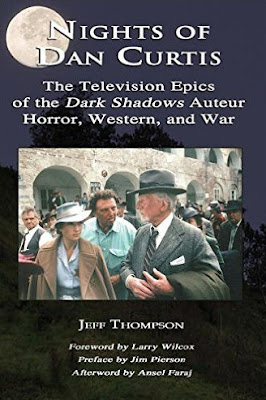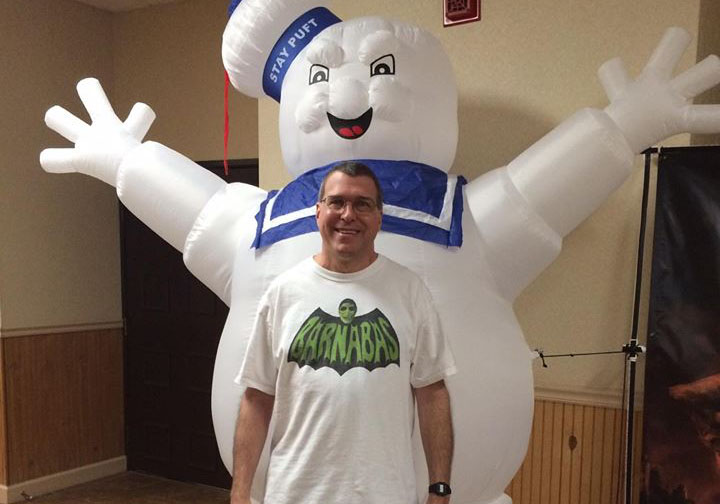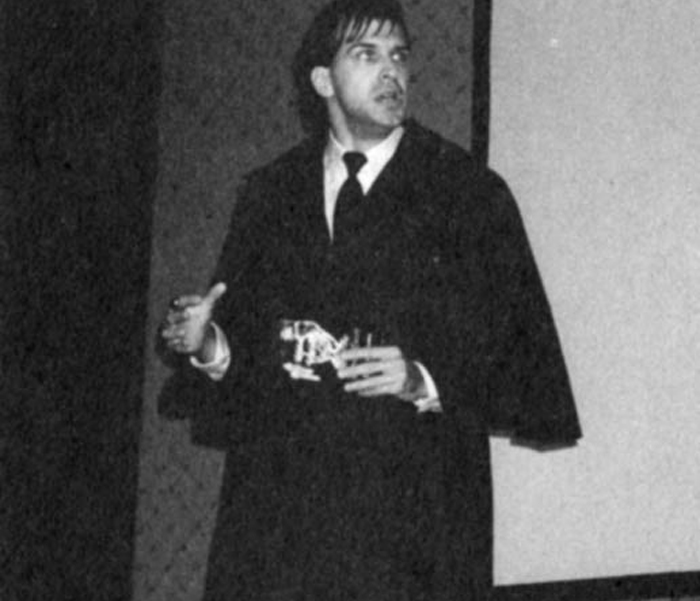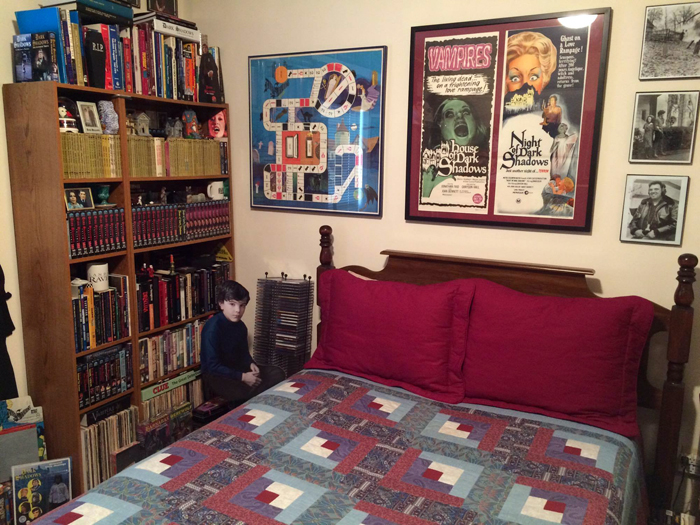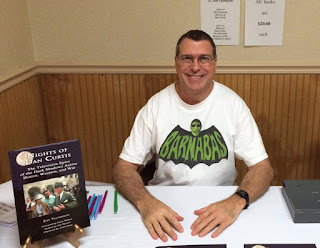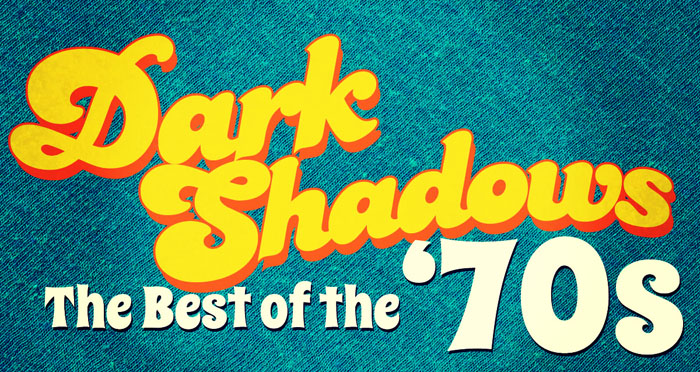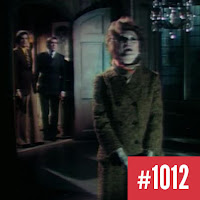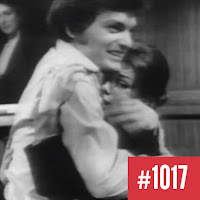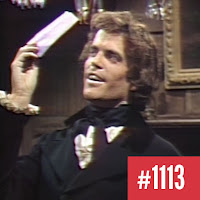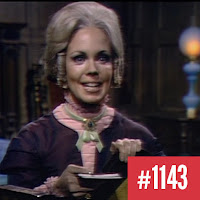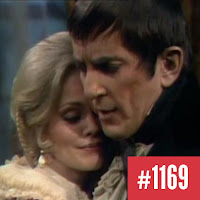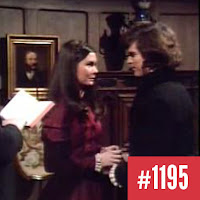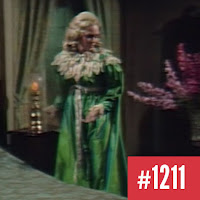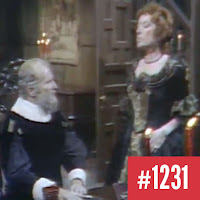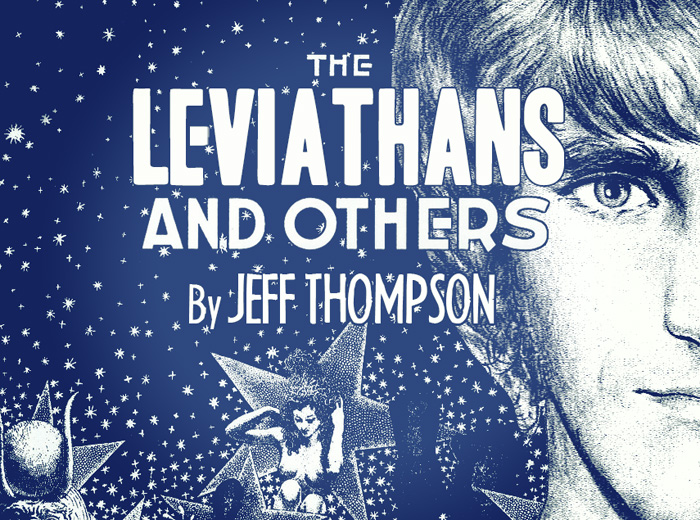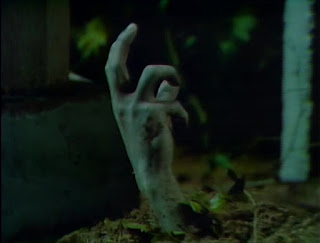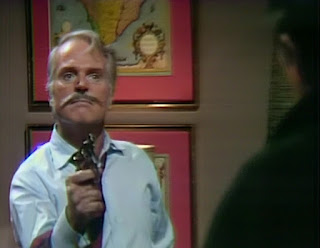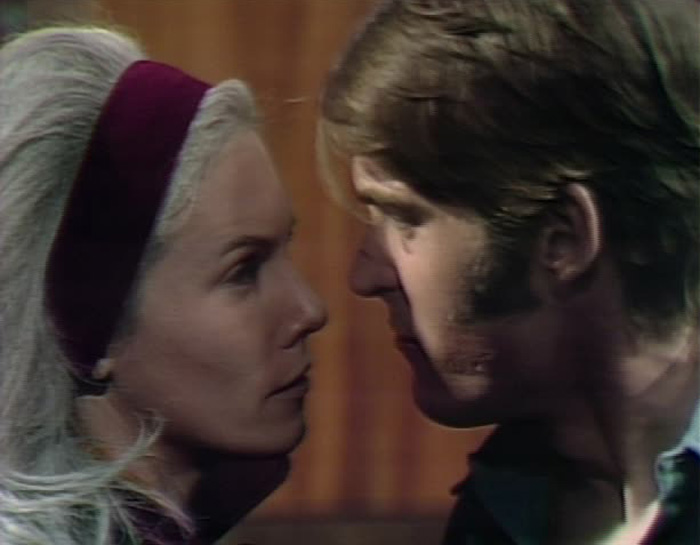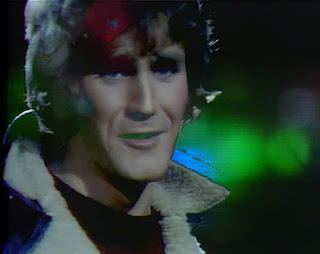By WALLACE McBRIDE
"Nights of Dan Curtis" is not an especially friendly book. Author Jeff Thompson (a frequent contributor to the CHS) is possibly the reigning scholar on the works of Dan Curtis, and it certainly shows in his latest publication, which is saddled with the subtitle "The Television Epics of the Dark Shadows Auteur: Horror, Western, and War." Having already tackled Curtis' horror movies and television shows in his books "The Television Horrors of Dan Curtis" and "House of Dan Curtis," Thompson focuses here on his outlying productions, which range from the trivial (1998's THE LOVE LETTER) to possibly his most important work (1983's WINDS OF WAR.)
Unsurprisingly, DARK SHADOWS lurks in the recesses of almost every chapter "Nights of Dan Curtis." Despite the filmmaker's efforts to marginalize his breakthrough achievement, the gothic soap provided Curtis with friends and professional relationships that endured his entire career. You'll see many of the same names appear throughout the book, such as Kathryn Leigh Scott, Robert Cobert, Barbara Steele, Lysette Anthony and John Karlen. No matter the subject matter (and Curtis produced everything from westerns to melodrama) you were bound to find some kind of connection to DARK SHADOWS.
When I cracked this book open for the first time (and I've returned to its pages many times during the last few weeks) it was under the delusion that I knew a little something about Dan Curtis. As it happens, I didn't know much of anything ... I've seen very few of the projects documented in this book, many of which were total revelations. It begins with a forward by one of my childhood heroes, Larry Wilcox (I was never much of a Ponch fan) who writes about working with Curtis on 1979's THE LAST RIDE OF THE DALTON GANG. There are details on the 1979 SUPERTRAIN debacle, 1974's MELVIN PURVIS G-MAN, 2005's SAVING MILLY and tons of other projects that were entirely new to me.
Still, it's not what I'd call a friendly read. Thompson has crafted a fine reference book here, which was almost certainly his intention. This isn't a book about Jeff Thompson; it's a book about Dan Curtis, and it's refreshing to see such an absence of ego in this kind of book. But it also makes it incredibly difficult to review in a typical fashion. In light of that, here are eight factoids I learned from reading "Nights of Dan Curtis," which ought to give you an idea of what to expect from the book.
1: Holy Candy Man, Batman!
Two years before DARK SHADOWS, Dan Curtis tried to develop a BATMAN television series for CBS. In 1964, Curtis got the go-ahead to develop a pilot, with CBS given right of first refusal. The vision of the series doesn't sound very far removed from the show created by William Dozier in 1966: actor Don Murray (CONQUEST OF THE PLANET OF THE APES) had agreed to star as the caped crusader, with Sammy Davis, Jr. as the Joker. Had a change in management not torpedoed the project, BATMAN would have stocked its rogues gallery with members of the Rat Pack.
2: CBS hacked Drac
In 1972, Curtis returned to the vampire well with DRACULA, which aired on television in the U.S., and was released theatrically (with a bloodier cut) in Europe. It was originally meant to be a much grander project, though. Curtis and screenwriter Richard Matheson wanted a three-hour time slot, but CBS granted them only two. While it was the first legitimate attempt to faithfully translate Bram Stoker's novel for film, both creators felt the shorter time slot hobbled (to a certain extent) the final product.
3: "That's the signpost up ahead ..."
As DARK SHADOWS was hitting its stride in 1967, Curtis was in the U.K. producing and directing THE STRANGE CASE OF DR. JEKYLL AND MR. HYDE. The TV movie was written by Ian McLellan Hunter and starred Jack Palance in the title roles, but neither were Curtis' first choice. When the project began development, actor Jason Robards was attached, and Rod Serling (!) was tapped to write the screenplay.
4: Author, author!
Herman Wouk was unhappy with the filmed adaptions of THE CAINE MUTINY and MARJORIE MORNINGSTAR, and was resistant to the idea of allowing WINDS OF WAR to suffer a "watered down" adaption. Curtis countered by bringing Wouk on board to write the screenplay of the 15-hour 1983 television mini-series, going so far as to give the author final approval on scripts.
5: It takes a thief
Robert Cobert frequently cribbed his own music from other movies. Listen carefully and you'll hear music from DARK SHADOWS appear in such productions as INTRUDERS and THE GREAT ICE RIP-OFF. "Quentin's Theme" made stealth appearances in both movies. If you've got to steal, steal from the best!
6: Great Scott!
Kathryn Leigh Scott auditioned for the role of Liz Stoddard in the
 7: The Number of the Beast
7: The Number of the BeastDan Curtis was briefly attached to direct DAMIEN: OMEN II. As a not-terribly-proud fan of THE OMEN movies, the lack of detail on this bit of trivia is maddeningly frustrating. But I probably shouldn't expect too many details about a production that ultimately didn't involve Curtis. Mike Hodges (GET CARTER, FLASH GORDON) was signed to direct but was booted and replaced during shooting by Don Taylor (THE FINAL COUNTDOWN).
8: A Monstrous Monopoly
Curtis' television adaption of FRANKENSTEIN debuted Jan. 16, 1972, the same night as THE NIGHT STALKER, which he also produced. THE NIGHT STALKER earned a 32.2 rating and 54 share, making it the highest-rated television movie to date. It was followed in 1973 by a sequel, THE NIGHT STRANGLER. The sequel marked the end of Curtis' relationship with Carl Kolchak.


